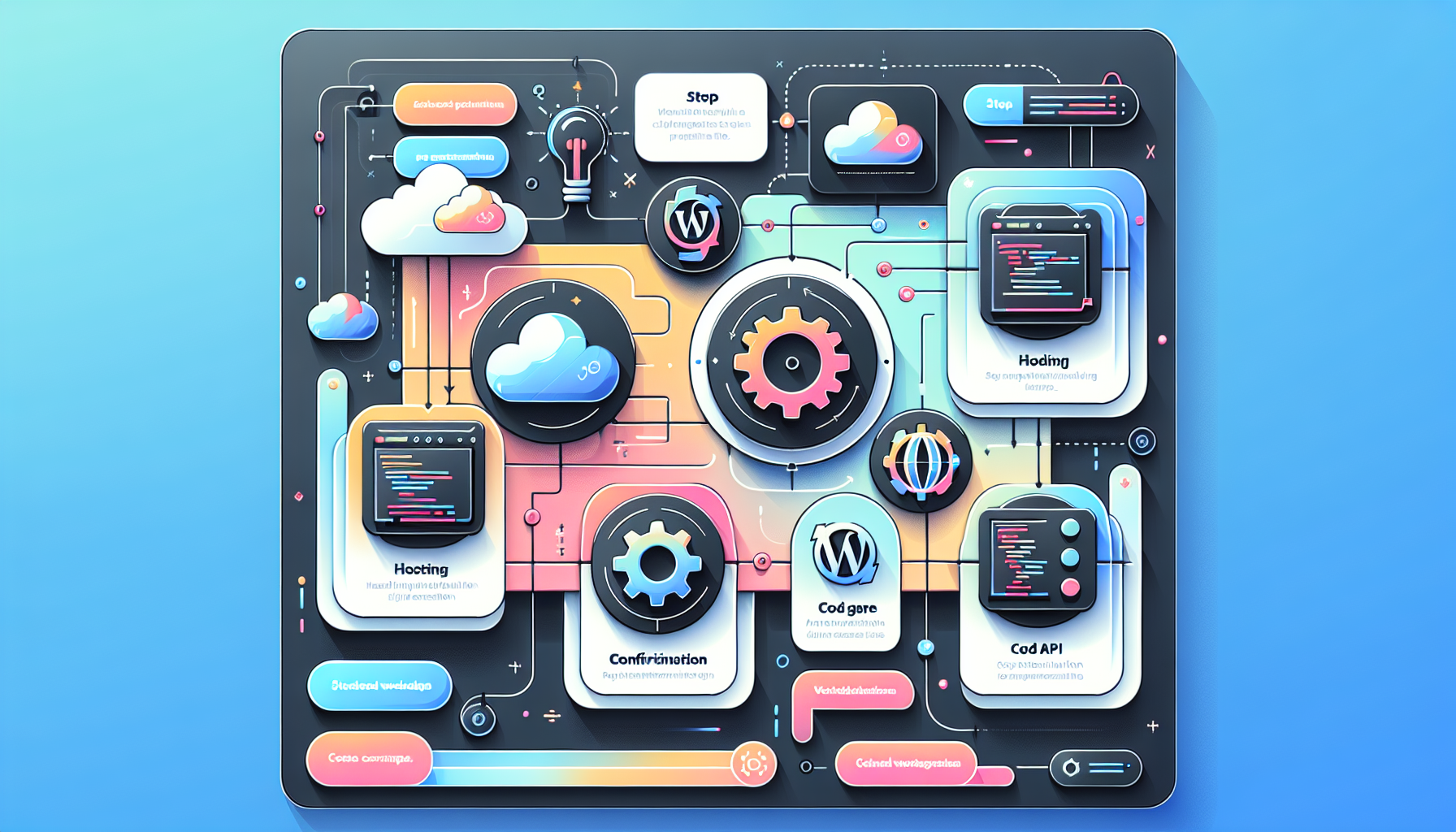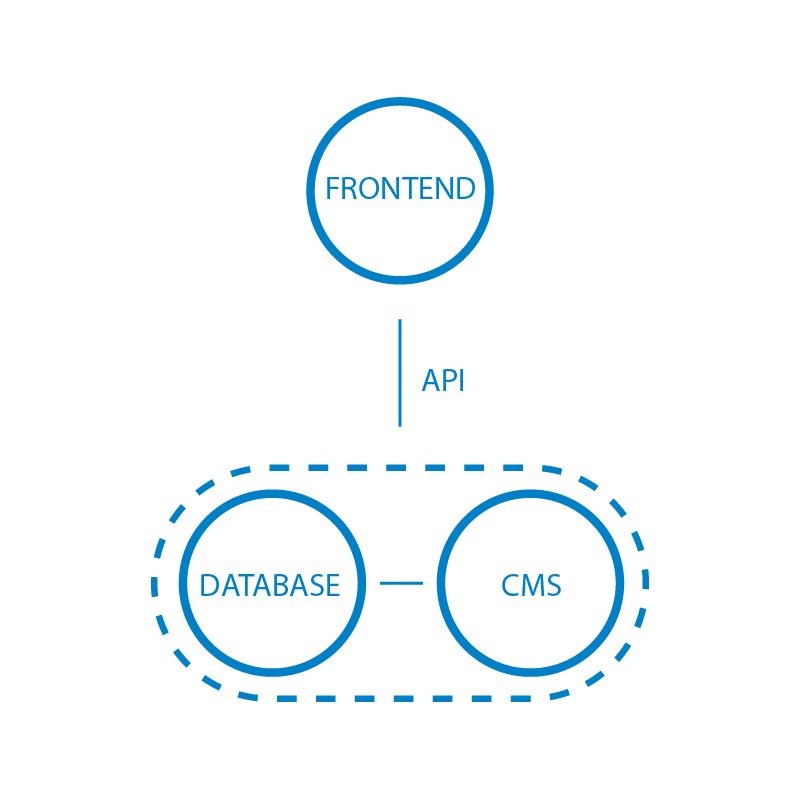Headless WordPress is revolutionizing web development by decoupling the front-end and back-end. This architecture offers unmatched flexibility, faster load times, and the ability to integrate seamlessly with modern technologies. In this article, we’ll explore why headless WordPress is the future of web development and the key benefits it offers for developers and businesses alike.
Key Takeaways
- Headless WordPress decouples the front-end and back-end, allowing developers to leverage modern technologies for enhanced customizability and performance.
- The architecture of Headless WordPress enables improved security, faster load times, and multi-platform content delivery, making it ideal for high-performance web applications.
- Adopting Headless WordPress requires careful consideration of technical expertise, initial setup costs, and SEO adjustments to ensure an effective transition.
What is Headless WordPress?

Headless WordPress represents a significant shift in web development, characterized by the separation of the front-end and back-end functionalities. Unlike traditional WordPress setups, where the front-end (what users see) and the back-end (where content is managed) are interconnected, Headless WordPress decouples these components. This decoupling allows developers to use WordPress solely as a content repository while building the front-end with any technology they prefer.
In a headless setup, content is managed in the WordPress backend and retrieved by the front end via APIs. This separation allows developers to use modern front-end technologies such as React.js, Gatsby, or Hugo, enabling them to create innovative and highly customized user interfaces. This approach is particularly beneficial for projects requiring high customizability and performance, like e-commerce platforms or extensive content publications.
Beyond flexibility, Headless WordPress offers faster load times, enhanced security, and seamless content delivery across multiple platforms. This architectural approach represents the future of web development, offering solutions that traditional WordPress setups struggle to provide, including the benefits of a wordpress headless cms.
How Headless WordPress Works
Headless WordPress starts with content creators using the familiar WordPress admin dashboard to manage and organize content. However, instead of being directly tied to a specific front-end, this content is stored in the headless wordpress backend and accessed via a RESTful API. The API bridges the gap, enabling the front-end application to request and retrieve content data.
Front-end applications, built with frameworks like React or Angular, access content from the WordPress backend via API requests. This setup means that content is managed in one place but can be distributed across multiple platforms, from websites to mobile apps and IoT devices. The front end receives the content data and renders it, ensuring that users experience a seamless and dynamic interface.
This architecture’s strength is its flexibility. Developers can choose any front-end technology that suits their project needs, creating a custom user interface that is not limited by the constraints of traditional WordPress themes. This setup enhances user experience and keeps the technology stack up-to-date and competitive.
Key Advantages of Headless WordPress

Headless WordPress offers numerous advantages, making it an attractive option for modern web development. By decoupling the front-end from the back-end, it offers enhanced performance, improved security, and unparalleled flexibility in design and development.
These advantages open up new possibilities for both developers and businesses.
Enhanced Performance
One of the most significant advantages of Headless WordPress is its enhanced performance. Separating the front-end from the WordPress backend significantly reduces load times, resulting in a faster user experience. This independent optimization allows developers to fine-tune both components separately, ensuring that the site runs smoothly and efficiently. Using modern JavaScript frameworks like React or Angular further enhances performance, creating lightning-fast websites.
Real-world examples showcase the benefits of this performance boost. For instance, BioCentury improved its content creation speed by 81% after adopting a headless CMS, significantly enhancing user engagement. Similarly, Komax’s shift to a cloud-based system improved site performance and content management.
These examples highlight the transformative potential of Headless WordPress in delivering high-performance websites.
Improved Security
Security is another critical advantage of Headless WordPress. Decoupling the front end from the back end reduces potential attack vectors, enhancing security compared to traditional WordPress setups. This separation acts as a buffer, safeguarding content and user data from potential threats.
Headless WordPress minimizes security risks by separating the content management system from the delivery layer. This design reduces common security issues associated with traditional WordPress, offering a more robust and secure headless wordpress site content management platform.
Flexibility in Design and Development
Flexibility in design and development is a hallmark of Headless WordPress. This method provides complete control over front-end design and functionality, enabling bespoke solutions tailored to project needs. Using any technology stack for the front end empowers developers to innovate and improve user experiences.
Headless WordPress allows developers to integrate modern front-end frameworks like React, Angular, or Vue.js, creating dynamic and interactive user interfaces. This flexibility allows for unique user experiences beyond conventional themes, offering opportunities for creative exploration and customization.
Scalability and Future-Proofing

Scalability and future-proofing are crucial in web development, and Headless WordPress excels in both. Its architecture supports seamless scaling, accommodating business growth without affecting existing functionalities.
This capability is vital for handling high traffic and ensuring consistent performance.
Independent Scaling
Headless WordPress enables independent scaling of front-end and back-end components, streamlining responses to performance demands. Each component can be scaled separately, accommodating varying demands on both ends. This flexibility is essential for businesses with fluctuating traffic, allowing real-time adjustments without compromising performance.
A notable example is AutoWeb, which revamped its website infrastructure using a headless CMS, resulting in a significant increase in revenue generation. This example showcases headless architecture’s potential to support business growth and scalability effectively.
Adaptability to New Technologies
The API-centric design of Headless WordPress ensures easy integration with emerging technologies, keeping the website relevant and competitive. This adaptability is vital in the ever-evolving digital landscape, where staying current with new technologies makes a significant difference.
For instance, Next.js is used to build high-performance single-page applications (SPAs) that enhance user experience with features like server-side rendering. Integrating with such technologies ensures that Headless WordPress remains future-proof and adapts to new trends and innovations.
Multi-Platform Content Delivery

Headless WordPress excels in multi-platform content delivery, a critical feature in today’s digital landscape. By decoupling the front-end and back-end, content can be published across multiple platforms, enhancing portability and reach. This architecture supports multi-channel delivery, enabling content use across websites, mobile apps, and IoT devices.
A unified backend simplifies content management, allowing updates to propagate across all platforms simultaneously. This efficiency reduces duplication of efforts and ensures content consistency and currency across channels. The REST API in Headless WordPress facilitates seamless content access, further enhancing multi-platform delivery.
Examples like 2U’s adoption of a headless CMS highlight this approach’s effectiveness. By streamlining content management for many educational partners, 2U ensured fast, efficient content delivery, showcasing Headless WordPress’s potential in managing multi-platform content.
API Integration
API integration is central to Headless WordPress, enabling seamless front-end and back-end interaction. REST API endpoints enable external applications to access and present WordPress content, enhancing the site’s functionality by integrating with various third-party services.
GraphQL offers an efficient way to query WordPress data, allowing clients to request only what they need. Targeted data retrieval improves performance and reduces unnecessary data transfer. Developers can create custom endpoints via the WordPress REST API to meet specific data needs.
Examples like Telenor’s automated metadata management for their streaming service illustrate the power of API integration. Telenor streamlined content management by enabling bulk updates to thousands of video entries monthly, demonstrating the benefits of robust API integration in Headless WordPress.
Custom Solutions for Unique Projects
Headless WordPress solutions are perfect for unique projects requiring high performance, interactivity, and custom solutions. It suits dynamic single-page applications (SPAs) and advanced e-commerce platforms. This flexibility enables developers to create tailored solutions for specific project requirements.
Progressive Web Apps (PWA) technologies can deliver app-like experiences on headless browsers, enhancing user engagement and experience. Choose Headless WordPress for projects requiring interactivity, custom design, high-speed performance, scalability for high traffic, and development flexibility.
For example, Multidots provides customized services tailored to headless WordPress projects, ensuring each solution is optimized for performance and functionality. This capability to create bespoke solutions makes Headless WordPress a powerful tool for unique web development projects.
Considerations Before Adopting Headless WordPress
Before transitioning to Headless WordPress, several considerations must be taken into account. Assessing business goals is crucial. Evaluating technical readiness, cost implications, and long-term digital strategy is also important. This evaluation ensures Headless WordPress suits the organization’s unique needs and capabilities.
Technical Expertise Required
Implementing Headless WordPress demands proficiency in modern JavaScript frameworks and a deep understanding of RESTful API or GraphQL. Teams must assess if they possess the required JavaScript and API skills or need additional training. Advanced JavaScript framework skills are crucial for successful implementation, making it essential to ensure the availability of technical resources.
Initial Setup Costs and Time
Organizations must consider the significant initial resource investments needed for a headless WordPress setup. Implementing headless architecture can cost around $2.6 million, reflecting the complexity and time-consuming nature of the transition compared to traditional setups.
Higher initial costs may be a drawback, but the long-term benefits might justify the investment. Transitioning to headless architecture involves significant up-front costs and ongoing developer support, but the resulting flexibility, performance, and scalability can lead to cost savings and business growth over time.
SEO and Content Management Adjustments
Transitioning to Headless WordPress requires significant changes in SEO strategies and content management processes. The decoupled nature of headless architecture means traditional SEO features may need re-implementation or adjustment, requiring a revised approach to maintain or improve search engine rankings.
Content management teams must adapt to new workflows and tools for centralized content management and streamlined delivery across various platforms. These adjustments are vital for maintaining content operations’ efficiency and effectiveness in a headless setup.
Steps to Get Started with Headless WordPress

Starting with Headless WordPress involves several key steps. First, install WordPress on your server or select a managed hosting option suitable for your needs. After setting up WordPress, install the necessary plugins, such as the WordPress REST API and Basic Authentication, to enable API access.
Next, enable a blank theme within WordPress to streamline the setup process. Familiarize yourself with the REST API and create custom endpoints to meet your specific data retrieval needs.
These steps will lay the foundation for a successful headless implementation, allowing you to leverage the full potential of utilizing headless WordPress.
Summary
Headless WordPress represents a transformative approach to web development, offering enhanced performance, improved security, and unparalleled flexibility in design and development. By decoupling the front-end and back-end, it provides a scalable and future-proof solution that can adapt to emerging technologies and handle high traffic efficiently.
The benefits of Headless WordPress are clear, but it’s essential to consider the technical expertise required, initial setup costs, and necessary adjustments to SEO and content management processes. With the right preparation and resources, Headless WordPress can revolutionize your web development strategy and drive your digital presence forward. Embrace this innovative approach and unlock new possibilities for your projects.
Frequently Asked Questions
What is Headless WordPress?
Headless WordPress is a decoupled architecture that separates the front end from the back end, providing increased flexibility and customization in web development. This allows developers to utilize various technologies for the front end while still leveraging WordPress for content management.
How does Headless WordPress enhance performance?
Headless WordPress enhances performance by decoupling the front-end from the backend, which significantly reduces load times and allows for independent optimization of both components. This results in a faster and more responsive user experience.
What technical expertise is required for Headless WordPress?
Expertise in modern JavaScript frameworks and a strong understanding of RESTful API or GraphQL are essential for implementing Headless WordPress. Advanced JavaScript skills are particularly crucial for success in this area.
What are the initial setup costs for Headless WordPress?
The initial setup costs for a headless WordPress architecture can average around $2.6 million, due to the complexity and extensive resources required for the transition. Thus, it’s crucial to prepare for a significant investment when considering this approach.
How does Headless WordPress improve security?
Headless WordPress enhances security by decoupling the front end from the back end, which significantly reduces potential attack vectors compared to traditional WordPress configurations. This separation makes it inherently more secure.

